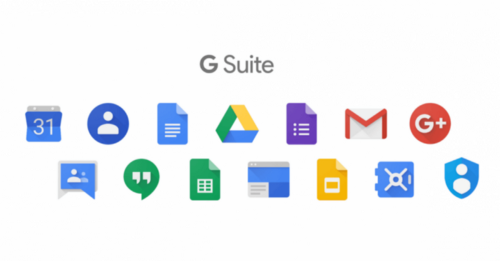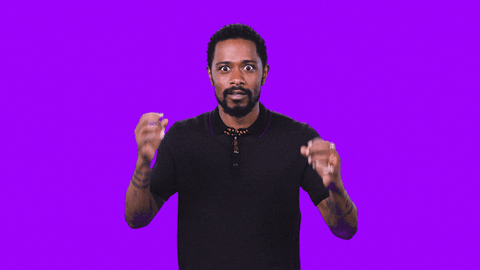How To Unlock $120,000 in Free Advertising (and then some).

Let me be straight up with you right from the beginning. This is not a joke. Most business owners don’t even know about this program, but Google offers $10,000 a month in search ads to non-profits. Here is a breakdown of how it works and how you can use it even if you’re not a non-profit.
What Is Google Ad Grants?
The Google Ad Grants Program gives nonprofits the chance to advertise on Google Ads at no cost to the nonprofit. This program gives qualified organizations $10,000 per month in Google Ads spend to be used to promote their initiatives on Google.com. You can also qualify to get free access to the entire Google Suite of products like gmail, drive, etc. To qualify, companies must go through the application process, and to keep the grant they must follow the program details. Things like keyword quality score and account organization, we’ll get into in a bit.

If you work at a non-profit, you like the sound of this. Before you apply, check to ensure your nonprofit is eligible. Here are the qualifications:
To be eligible for Google Grants an organization must:
- Hold current and valid charity status (for example, in the US you must have a current 501(c)(3) status)
- Acknowledge and agree to Google Grant’s required certifications regarding how to receive and use donations obtained from the grant (we will go into more detail)
- Have a website that is both functioning and provides adequate detail on your nonprofit
What If My Business is Not a 501(c)(3)?
I have several clients who I made aware of the program and we either decided to create a 501(c)(3) or use one they already had. Most businesses are essentially providing value to their clients in some way, shape or form. It’s fairly easy to spin off a section of your company and create a 501c that will focus solely on writing, and giving value.
From there you can monetize several different ways. Place advertising across the non-profit site linking to your main business. Obviously the non-profit needs to be built around your primary business.
You can also use the email list to run advertorials, social media backlinks, introduce thought leaders, and a million other ways to bring those leads from the 501c to your primary business. Reach out to me if you have any questions on how you can monetize on it.
Take a Look at This Example:
Timmy came to me to run lead generation ads for his credit repair company. We had tremendous success on several platforms. We spent $10,000 a month to generate 795 leads. $12.57 cost per lead (CPL). Timmy wanted a lower cost and it likely wasn’t going to happen. We had exhausted every option.
- Lookalike audiences ✅
- Multiple creatives ✅
- AB testing on landing pages ✅
- Dynamic bid adjustments ✅
- Remarketing abandoned forms ✅
Nothing was significantly bringing costs down. So we tried something else. We decided to take advantage of the Google grant program and use a non-profit he had set up. So we did a DBA, set up a website, paid an intern to blog, but we had a lot of the evergreen content already written, so we repurposed it.
After applying, getting approved, setting everything up, we ran it for a month. Here is the breakdown of the results.
- Admin fees to set up the company and program: $1,250.
- Blog site set up including yearly hosting: $1,500.
- Inter to write content: $1,000
- Search spent for the month: $ 7,251 (provided by Google).
- Leads generated: 214
- CPL in month 1: ($1,250+$1,500+$1,000)/214= $17.52
Although that’s actually a 46% increase in CPL take a look at how this plays out. In month 2 we were able to optimize slightly and spent $8,123. We generated 298 leads.
- CPL in month 2: $1,000/298= $3.35

If you look at the overall CPL including our own budget with direct ads and the Google grant ads with the added step. We drastically lowered the CPL and CPA making the entire campaign much more profitable. From an agency perspective, we were able to drive more revenue and increase the monthly budget.
Month 2 breakdown:
- Internal budget: $10,000
- Lead count for: 754
- CPL: $13.26
- Lead count including grant: 754+298=1,052
- CPL including grant. $10,000/1,052=$9.50
Of course, this is based on lead generation but the same can be done for e-comm or any other service. Reach out to me if you have any questions on how you can monetize on it.
It wouldn’t be prudent for me to elaborately give you all the upside and let you assume there is no downside. Well, there isn’t but there are a few things to be aware of. You need a Google grant expert to run this. It’s not the same as a regular Google search or display campaign and you definitely don’t want your account shut down because you let your cousin run it.
How to Maintain Eligibility for Your Google Ad Grant
Once you’ve scored a Google grant, the tricky part is maintaining it. So, how do you maintain eligibility?
- All the ads in your account must link to the nonprofit URL that was approved in your application process.
- Be proactive in your Google Ads management by logging in to the account monthly. If a nonprofit advertiser who has a Google Grant does not log into their Google Ads account, the account is subject to being paused without notification.
- The ads you are promoting must reflect the mission of your nonprofit. You can advertise to sell products as long as 100% of the proceeds are going to support your program.
- The ads you create cannot point to pages that are used to primarily send visitors to other websites.
- Your ads cannot offer financial products, such as mortgages or credit cards. Your ads also cannot be asking for donations in the form of large goods such as cars, boats or property donations. Keywords related to this activity are also not allowed.
- Your website cannot display ads from Google AdSense or other affiliate advertising links while participating in Google Grants.
Google states that any violation of these guidelines are subject to removal from the program. They also reserve the right to supplement or amend these eligibility guidelines at any time.
Google Grant Program Details
Now that we’ve gotten through the nitty-gritty of what your status needs to be and what you can and cannot do, let’s dive into the details of Google Ads marketing for nonprofits.
Google Grant recipients receive free Google Ads advertising, but only to display their ads on Google.com. If you have been selected to receive a Google Grant you will build and manage your own Google Ads account similar to paying advertisers. What this means is that you will have control over your Google Ads account and Google will not be managing it for you.
There are some restrictions …
First, your daily budget will need to be set at $329 ($10,000 per month) and you cannot have keywords with a Max CPC over $2.00. Plus, your ads can only appear on Google.com — you cannot use Search Partners and since you can only be on Google.com with text ads, you are not eligible for the Display Network either.
So, with these restrictions, it might be a little more difficult to manage a PPC account. The biggest part of Google Grants is the money, and if you don’t use it, you lose it. Because of this, some of you will have a hard time finding a way to spend the $10,000 per month. If you’re struggling to spend your dough, here are some basic optimization recommendations.
Negative Keywords
Don’t go overboard with negative keywords; you need to spend this money. Yes, you’re going to want to block traffic that is nowhere near relevant to your site/organization, but you’re not measuring on ROI or even ROAS in the same manner as you would for an account where you are putting in your own marketing dollars. You’re still going to want to set negatives to block out completely irrelevant traffic; for example, if you were looking for musical instrument donations and had a “Flute” ad group, you would want to set “Champagne” as a negative. You should also be looking at your query information to see not only what queries are triggering your ads, but to monitor for irrelevant traffic. I would also say that if you’re a nonprofit looking for monetary donations, you should also be including keywords looking for volunteers, making people aware of your services, and asking for non-monetary donations as well. While I understand the purpose and point of a campaign to be collecting monetary donations, you are going to need to find more keywords to get more traffic and find ways to spend the money. Since you aren’t measuring your ROI as strictly, you can do this. Remember, this is free ad spend!
Keyword Selection
In terms of keywords selection, be sure to pick relevant terms and match types (we’ll get into in a little bit). I know you are going to be anxious to not only spend the money, but make sure you stay competitive. While it is hard to compete using a keyword that is usually a $6 CPC when you can only have a $2 Max CPC, this means you’re going to have to get creative, using longer tail keywords and going a little outside of the box to find searchers. Again, even go for other keywords associated with your business to help bring in more traffic. (Think about the example above, instead of just monetary donations talk about volunteer opportunities as well.)
Keyword Match Types
Be sure you don’t restrict your match types too much. Again, you need to spend this budget, and in a way that is going to benefit your organization. Broad match types are going to bring you a lot of impressions and potential clicks. This will also allow for you to be open to more searches. If for instance, you’re a nonprofit looking to only receive donations through your paid search efforts you might find that you are receiving traffic of people who are looking for assistance from your nonprofit. Is this a bad thing? No, it might not be exactly who you are marketing to, but it is also spreading awareness of the organization. You are still going to find keywords that you’re going to want to be on phrase and exact match on, use them, but make sure they are keywords that can handle the max CPC of $2 limit and still be competitive.
Don’t Abandon Best Practices
Working with clients who are using Google Grants is interesting because you need to take a pretty different approach to manage the account compared to one with actual marketing dollars. I know I spoke a lot about making sure you are spending the budget, but I have seen clients who need to cut back, so please remember that you still want to be smart and have a solid account structure. As always, keep PPC best practices in mind when structuring your ad groups and ads.
Good luck getting your Google Grant! Follow me here and on Instagram for more content just like this.
